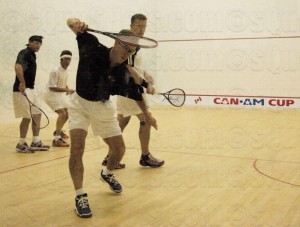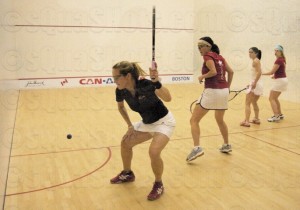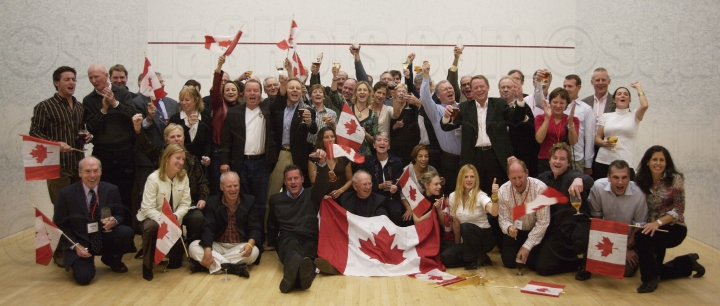
An idea that had lain dormant for more than ten years sprang back to vibrant life on a Boston October weekend. The Can-Am Cup, initially a competition between the United States and Canadian professionals in ’96 and ’97, returned as a successful replacement for the World Doubles tournament. Organized to the last detail by Lenny Bernheimer and his committee, the hosts were rewarded with a resounding victory for the United States. Appropriately, the competition was sponsored by John Hancock, an American company owned by a Canadian parent.

Discussions of the Can-Am Cup began over a year ago when concerns over the primacy of the biennial World Doubles event arose. The US Doubles Committee, under the leadership of Morris Clothier, began to explore alternatives, and conversations with Mike McGorry, Jim Zug and Bernheimer produced the Can-Am format. Patterned loosely after golf’s Ryder Cup, there were three rounds of competition. Selection of two Mens and Womens teams in each of seven age groups plus the Open and Mixed categories was determined by 2008 year-end rankings with captains having wild card selections to cover drop-outs and unavailability.
As the October date neared, preparations proceeded, team selections were made, and enthusiasm grew on each side of the border. Team captains took pencil and paper to make predictions. With 52 players on each team and three rounds of play, 78 points were at stake with the winner needing 39 ½. The Lightning round (where left and right wall players were matched by draw from a hat) was a toss-up. The subsequent two rounds matched each country’s No. 1 and No. 2 playing the opposing 2 and 1, then their counterparts on the next day. On paper, the Canadian men looked to be stronger, leaving the US in the hands of a hopefully-stronger women’s group.

Paper is one thing, play on the courts is another. Decked out in colorful team jackets and shirts with country flags on each court, the Lightning round was completed with the score 7-6 US, close to even, as predicted. From there on, however, the US team began a decisive roll, started in early matches by women’s victories and followed by several upsets where US No. 2 teams defeated Canadian No. 1 teams. At Saturday’s end, the US had built their lead to 30 ½ -17 ½, leaving the Canadians with an almost insurmountable task in the 20 matches remaining on Sunday. Determined not to watch the weekend go up in smoke, the Canadians by and large made their presence known at the Saturday evening dinner.
The hosts delivered the coup de grace the next day, running up the final score to 51 ½ – 26 ½. (details available on permanent website, www.canamsquash.com).
The Can-Am Cup is unique in its national team character in a sport where the emphasis is largely individual or a doubles team. That character made for a spirited atmosphere enjoyed by winners and losers alike. The success of this year’s event bodes well for its 2010 continuation in Canada and already there is talk of a payback.


